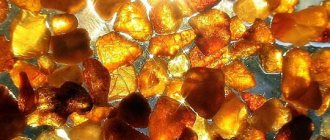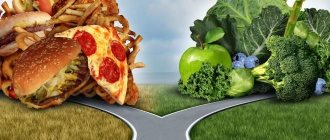What is gluten
Gluten is a generalized name for a set of proteins found in cereal plants.
The greatest amount of it contains:
- wheat;
- rye;
- barley.
Otherwise, gluten is also called gluten. It has a binding property, and plays a huge role in the production of bread: it makes the dough elastic and elastic. Without gluten, baked goods lose their basic taste.
In its dry form, gluten has no color, smell, or taste. When interacting with water, it turns gray and looks like glue.
In addition to baking, gluten is found in many foods. American scientists have found that a third of all store products contain it.
Biochemical characteristics of gluten
The biochemical characteristics of gluten are described by its chemical composition. 2 main proteins determine the composition of gluten: gliadin and glutenin. The quality of flour will depend on the ratios of these substances, but the amount of gliadin is always greater than glutenin.
In addition to protein components, there are also:
- lipids;
- carbohydrates;
- minerals.
The quality of gluten directly depends on the protein component and is practically independent of non-protein components. But lipids, for example, by reacting with protein, can also affect the quality of gluten. Purified gluten is always almost 100% gluten protein. It is gliadin that has a damaging effect on the intestinal walls.
This component is soluble in alcohol and can be divided into the following fractions:
- alpha;
- beta;
- gamma;
- delta.
Scientists have found that the most toxic to human organs is alpha-gliadin, the hydrolysis of which is disrupted in the intestines. However, the full pathogenesis of gluten intolerance disease is not clear.
There is only a theory that amino acids and protein particles entering the large intestine, not fully digested, begin to rot and thereby have a detrimental effect on the entire body.
Scope of application of gluten
Gluten has found wide application in many industries.
Below are the main ones:
- Bakery production and production of confectionery and baked goods. With the help of gluten, we not only achieve dough elasticity, but also increase the shelf life of finished products. Gluten significantly improves the physical and chemical properties of produced bread.
- Production of pasta . What is important here is to obtain a high quality product, which is determined by the shape. Gluten is responsible for giving pasta its shape. It is also a binding component in the dough.
- Meat processing industry . Gluten is used as a special food additive to increase the density of semi-finished meat products. Its use is especially relevant when replacing meat with proteins.
- Production of various frozen semi-finished products : dumplings; ravioli; dumplings; puff pastries.
- Production of breakfast cereals, mixtures, bran . To increase the protein component, wheat gluten is added to the product.
- Dairy industry . Gluten is added to baby food and milk formulas. Curd bars and glazed cheese curds, as a rule, also contain it in their composition.
- Pharmaceutical industry : A number of medications contain gluten.
- Alcohol industry . Gluten is a mandatory additive in some drinks.
List of unwanted products
Now here is a list of foods that contain gluten and should be avoided.
So, the main undesirable components of your diet:
- cereals - any varieties of wheat and rye, as well as starch from them, maltose products and barley malt;
- pasta, bakery products, pastries, etc.;
- meat and fish products, including canned food, sausages and hard sausages, crab sticks;
- dairy products - curd masses and curds, yoghurts, cheeses and ice cream;
- most industrially produced seasonings and sauces, including ketchups and mayonnaise.
This list should not be considered exclusive or comprehensive. At the moment, many types of products and active substances are also suspected of containing components such as casein or gluten.
Since the cooking recipe changes, it is not always possible to timely determine the necessary products to exclude them from the gluten-free diet.
Harm of cereal gluten
Already at the beginning of the 20th century, people started talking about the dangers of gluten. And soon a disease intolerance to this protein was discovered - celiac disease. Currently, this disease affects more and more people: both adults and children. Since the permeability of a child’s intestines is higher, the risk of developing the disease in children predominates.
Of the two main components contained in gluten, gliadin is the most dangerous. Once in the intestine, it affects the villi of the walls, disrupting their basic functions. In this case, the process of digesting food and absorbing nutrients fails, and intestinal upset occurs.
May be observed:
- bloating - flatulence;
- bowel dysfunction;
- decreased appetite;
- sharp pain in the abdomen;
- vomit.
Diagnosing celiac disease is very difficult. The above symptoms may not appear immediately, but several days after ingesting gluten. There have been cases of asymptomatic disease, but with serious consequences for the human gastrointestinal tract. There are laboratory tests to make an accurate diagnosis.
A lack of vitamins and beneficial microelements leads to a deterioration in a person’s general condition. Migraines appear, hair and nails begin to fall out. Sudden weight loss may occur. Celiac disease usually manifests itself in the form of allergic reactions, especially in children. In general, gluten products are considered very allergenic and should be completely excluded from the diet for any skin rash.
Gliadin is very similar to the protein cells of some human organs, such as the pancreas and brain. Once in the intestine, the immune system begins to produce antibodies to a foreign object - gliadin. But given the similarity in the structure of proteins, it also attacks the body’s own cells.
Previously it was claimed that only 1% of the total population of the planet suffers from this disease.
However, recently this figure has increased significantly. Therefore, if symptoms of celiac disease are detected, it is recommended to immediately consult a gastroenterologist for an accurate diagnosis. After all, the consequences of celiac disease can be sad: from complete depletion of the body to death.
Why is celiac disease dangerous?
Medicine considers celiac disease a childhood disease, since it makes itself felt in infancy. It appears during the transition from breastfeeding to infant formula and cereals that contain gluten. The body of an infant with a genetic predisposition to intolerance to this protein reacts with the appearance of diarrhea and sudden weight loss, which is associated with a lack of necessary substances.
Timely consultation with a doctor allows you to quickly diagnose the disease.
A blood test will immediately show a decrease in the level of hemoglobin, albumin and total protein. Other symptoms of the emerging disease may be brittle hair, nails, the appearance of a specific rash, the appearance of bursting blisters on the skin and non-healing ulcers that form in their place.
Gluten-containing products (the list must be remembered by people suffering from intolerance to the substance) should be excluded from consumption in such patients. If this disease is not associated with heredity, then with age the symptoms of the disease may disappear. But if the factor of gluten intolerance is congenital, then it will have to be excluded from the diet forever.
The situation is more complicated with the diagnosis of celiac disease in an adult who has the genetic prerequisites for its development.
In such cases, gluten provokes inflammatory processes similar to allergies. Lymph cells affected by the inflammatory process, entering the small intestine, begin to displace the villi membrane, which ensures normal absorption of nutrients.
The stomach begins to swell, changes in stool occur, manifesting either in constipation or diarrhea. A person loses weight sharply, not receiving enough nutrients necessary for life.
To diagnose the occurrence of celiac disease, gastroscopy of the duodenum is performed with taking samples for a biopsy; this method is considered to confirm the presence of the disease. The diagnosis can also be confirmed based on a blood test, examining antibodies to gliadin peptides.
Acceptable gluten consumption standards for children and adults
Products containing gluten are included in the average person's daily menu. Complete exclusion of gluten-containing foods is only recommended for people with celiac disease. There is no urgent need for healthy people to adhere to a gluten-free diet, choosing a meager diet from the tables of permitted foods.
On the contrary, when talking about harm, we must not forget about the beneficial properties of this component. First of all, it contains fiber, which is necessary for human health.
Speaking about the consumption standards for products containing gluten, you need to ensure that everything is in reasonable quantities. Especially in the nutrition of young children. Bread and pastries will not bring much benefit, so it would be advisable to minimize their amount in the diet and replace regular foods with whole grains.
It is better to start feeding children with vegetables rather than cereals. Gluten-free cereals can be introduced only after 4-6 months. Gluten - after 9. A serving of gluten porridge for a child under 1 year old - no more than 150 g.
Limiting the consumption of gluten-containing foods will undoubtedly have a positive effect on a slim figure and overall well-being. But it should be understood that a complete refusal of gluten is undesirable for an absolutely healthy person and can result in a lack of vitamins and fiber.
What to prefer in your diet
For those who may be critical of this kind of dietary restrictions, we recommend paying attention to many celebrities representing show business. Many of its representatives have long adhered to a diet that excludes gluten protein from their diet. Among them are Victoria Beckham, Jerry Halliwell, Lady Gaga, Cate Blanchett and many other names.
And if you are already interested in the principles of a healthy and, most importantly, gluten-free diet, then it would be useful to turn your attention to the following list of products that are very desirable to have in your diet (the so-called Dr. Lipman’s menu):
- fresh berries (especially blueberries) are a source of antioxidants and vitamins that stimulate and support our immunity;
- sources of healthy fats, for example, all sea fish, avocados;
- Pickled vegetables and soaked gluten-free cereals are a source of biologically available elements that help digestion and also enhance the protective properties of the human body.
Understanding that following a healthy diet that does not contain casein or gluten is objectively necessary, it is logical that such thoughts should be shared by all family members. It is in this case that there will be less temptation to eat something from the forbidden list and expose yourself to an additional risk factor.
Complete list of gluten-containing foods
Products containing gluten (table below) make up the majority of the diet of people who are lucky enough to not know what celiac disease is.
Products containing gluten. The table will show this.
All products can be divided into the following categories:
- gluten-containing;
- containing traces of gluten;
- gluten-free.
The largest amount of gluten is found in wheat flour and its derivatives. But due to the widespread use of gluten in many industries, it is very difficult to find a gluten-free product on store shelves today.
The table provides a complete list of the main types of products containing gluten:
| Food products | Medications | Nutritional supplements |
|
|
|
Dairy products
The main property of gluten is “gluing” or binding the components in the mixture. This is precisely why it is added to dairy products: to give uniformity and thickness to the composition.
Gluten is added during production:
- yoghurt products;
- curd masses;
- ice cream;
- cheesecakes;
- some types of cheese.
Plant products
Products containing gluten (the table above does not contain a complete list of them) are represented mainly by plant products, namely cereals. Their grains contain the largest amount of gluten.
Wheat contains up to 80% gluten, semolina - up to 50%, rye - 16%. Accordingly, all products made from these cereals will contain gluten.
Vegetables and fruits do not contain gluten. However, it should be remembered that vegetable sauces or preparations, fruit jams or canned goods may contain gluten as a thickener.
Animal products
Meat itself does not contain this protein. However, it is unlikely that you will be able to find a gluten-free semi-finished meat product in the composition.
It is added during production:
- sausages;
- sausages;
- sausage;
- cutlets;
- meatballs.
When gluten is added, the density of the product increases and the presentation improves. To save money, many manufacturers replace pure meat with dry proteins. Gluten is also used for these purposes.
Flour products
Flour products made from gluten flour (wheat, rye) will also contain this protein. In addition, its content may even increase: additional gluten is added to the dough to improve the structure and give elasticity.
However, recently products made from gluten-free flour (rice, corn) have become popular. Such baked goods will not be particularly fluffy or fragrant, but they will definitely bring more benefits.
Sauces and seasonings
Sauces and seasonings are auxiliary products in the kitchen. But you should be careful when choosing them: study the composition on the label. Today it is difficult to find any gluten-free sauce.
Gluten is used as a thickener in sauces.
The well-known soy sauce is a seemingly harmless natural product. But most often it is made from soy and wheat, so it may contain gluten.
Seasonings are also made using this protein:
- curry powder;
- ready-made salad dressings;
- breading mixtures.
Drinks containing gluten
The gluten content in alcoholic beverages is determined by the raw material composition. For example, whiskey or tequila do not contain it. And vodka made from wheat will contain gluten. Beer made from barley or malt is similar.
Due to excessive attention to the harmful properties of gluten, some manufacturers began to produce gluten-free beer. But it has been proven that there is no benefit from it. On the contrary, added flavor enhancers not only distort the true taste, but also harm the body.
Medicines containing gluten
Products containing gluten (the table above contains a complete list of names) are not the greatest danger for adults and children. After all, some components can be replaced or eliminated altogether.
A much more serious situation is when necessary medications for a particular disease can be dangerous due to the gluten content. And there are many such drugs.
Here are some groups:
- Antibiotics are drugs to fight bacterial infection.
- Antipyretics - means to normalize body temperature (ibuprofen).
- Antihistamines - to relieve allergic reactions (fenistil).
- Hormonal agents - to improve hormonal levels (metronidazole, flagyl, dexamethasone).
- Sedatives - means for relieving tension and leveling the psycho-emotional state (valerian).
- Anti-epileptic drugs - aimed at treating epileptic seizures (phenobarbital).
When a doctor prescribes any drug, it is necessary to talk about gluten intolerance, if any. Gluten in medications is a common and sometimes necessary phenomenon. It is used as a thickener for many syrups and mixtures. But science does not stand still: gluten-free medications have been created for patients with celiac disease.
Gluten Supplements
Products containing gluten (the table above includes specific examples of additives) also include a whole range of excipients - food additives. Today it is quite difficult to find a product without them in its composition. There are a huge number of them, and most of them contain wheat flour (gluten).
Below are the main groups:
- Dyes are additives to give or improve color to a product (E 150, E 160).
- Food stabilizers - to give the product shape (E 411).
- Flavor and aroma enhancers - to improve taste (E 636, E 637, E 953, E 965).
If you are gluten intolerant, it is important to study the composition of products for the above additives.
Products with hidden gluten
There are a number of products in which it is difficult to determine the gluten content due to the hydrolysis processes used in food production. In these cases, the gluten molecules are broken down and their presence becomes difficult to detect. These products include a number of semi-finished confectionery products, food colorings and some food additives - E636, E637, E411.
Chocolate
Chocolate bars contain not only cocoa beans, but also a number of other ingredients. Wheat flour is used to bind the additives included in the final product.
Soy sauce
Gluten is added to many sauces to give them viscousness and some viscosity. Soy sauce, in addition to soybeans, contains this binding element.
Alcohol
The presence of gluten in alcoholic beverages is due to the raw materials used for its production. The largest amount of it is found in beer, which is prepared from barley malt. Vodka, whiskey, gin and other drinks made with grains containing gluten also contain traces of gluten.
Packaged soups
The presence of gluten in packaged soups is due to the presence of pasta and food additives made from wheat flour.
Ketchup, mayonnaise, salad dressings
Sauces and some salad dressings that contain thickeners inevitably contain gluten, which is present in the main binding element - gluten.
Crab sticks
This product is unfairly called seafood, and it has nothing to do with crabs. This is an imitation made from minced fish of various breeds with the addition of crab flavoring agents and a binder that contains gluten.
Malt vinegar
It has not found wide use in domestic cooking, but is widely used in the cuisines of Anglo-Saxon countries. It contains high gluten content.
Ice cream
Not all samples of this beloved delicacy contain gluten. This is typical only for those types of ice cream where wheat malt or chocolate containing gluten was used in production.
Gluten Free Products
There is no complete cure for people with gluten intolerance. Celiac disease is a lifelong autoimmune hereditary disease. If symptoms are detected, a gluten-free diet is prescribed by a gastroenterologist.
Despite the abundance of products containing gluten, there are a whole lot of purified products:
- buckwheat grain;
- rice;
- quinoa;
- millet;
- amaranth;
- corn;
- vegetable oils: flaxseed, corn, sunflower;
- potato;
- vegetables;
- meat;
- fish;
- fruits.
Today, supermarkets have dietary departments with special foods, where you can find gluten-free:
- breakfast cereals;
- cookies and baked goods;
- sweets.
How to Determine Where Gluten Is Hiding
It would be useful to remember which diet products have the “gluten free” note, and which ones are full of it. When purchasing manufactured products, you should carefully read the labels, because according to the European standard, manufacturers are required to write the full composition of the product.
At home, you can determine whether the purchased product contains gluten. As you know, this protein, reacting with an iodine solution, becomes either purple or black, just like potatoes or rice react with iodine. But it is starch that reacts in them, not gluten, so both of these bioproducts are included in the gluten-free list.
By the way, such products can also be ordered via the Internet.
When going to the store, you should remember such product manufacturers as:
- Manufacturer of amaranth products “Di&Di”;
- “Healthier” - produces baby and diet food, excluding gluten and GMOs;
- “For the benefit of everyone” - producers of environmentally friendly products;
- "Nutbutter" - nut products;
- "BEZGLUTEN" is a Polish company with a wide distribution area;
- "Mistral" - specialize in cereals and legumes;
- “Butter King” - mainly produces flour and butter without additives, GMOs and gluten;
- "Dietetics".
These manufacturers are aware of gluten intolerance and allergic reactions to it, and therefore supply products to the market labeled “gluten-free.”
Attention! Information about manufacturers is provided for informational purposes and does not constitute advertising!
Experts will tell you how to take gainers to gain muscle mass on our website. Do you count calories? This is very useful to do, especially for those who dream of a slim figure. Read here how many calories you need to consume per day and how to make an individual calculation.
The diet for gastritis of the stomach should be special; its principles and menu are described here. If you suffer from this disease, make a bookmark so as not to lose the necessary information.
Consequences of excess and deficiency of gluten in the body
Recently, it has become very fashionable to adhere to all kinds of diets. And gluten-free is no exception. A large number of people, not understanding the beneficial and harmful properties of gluten, categorically refuse to eat foods containing gluten. But whether this is so useful, scientists are still arguing.
The beneficial properties of gluten undoubtedly exist. First of all, the fiber content in its composition.
In addition, gluten contains many vitamins:
- vitamins B and D;
- iron;
- magnesium;
- folic acid;
- zinc.
Oddly enough, a lack of gluten in the body can have a negative effect on the human body.
Here are some consequences:
- By depriving oneself of grain products, a person also refuses the vitamins contained in them. A deficiency of microelements and nutrients will lead to rapid fatigue and loss of strength. Sleep may be disturbed and mood swings will occur.
- Gluten-free diets often come down to replacing protein with protein. And of course, they are trying to increase the consumption of meat and meat products. But animal protein can also cause harm. Scientists have proven that the risk of developing cancer increases several times in those who consume large amounts of this protein. Thus, refusal of cereals and grain products can lead to the development of cancer.
- American scientists also conducted a series of experiments that found that giving up gluten leads to a risk of developing diabetes. This is explained by the antidiabetic properties of the fiber contained in gluten.
- Fiber deficiency can disrupt the functioning of the gastrointestinal tract. There will be problems with digestion, and stool may be disrupted.
- Some people mistakenly believe that giving up gluten will help them lose weight. This is not true: it is difficult to replace high-calorie breads rich in vitamins. Therefore, a person begins to feel hungry more often, and accordingly, he begins to eat “allowed” foods more often, thereby overeating. Such a desire to lose weight can result in a set of extra pounds.
For healthy people without autoimmune diseases, it is not necessary, or even advisable, to give up gluten. Of course, excess gluten can also lead to negative consequences. But not the protein itself, but the amount of flour products consumed. If consumed excessively, this cannot but affect the figure.
Excess weight and subsequent problems with the cardiovascular system are the consequences of excessive consumption of gluten-containing products, primarily baked goods and bread products.
If you follow the optimal amount of consumption, you can avoid consequences and maintain health. It is important to understand that the call to completely abandon this protein is a marketing ploy by large companies that specialize in producing gluten-free products.
The cost of such products is approximately 2-3 times higher than analogues containing gluten. However, the components in them are purified, devoid of vitamins and minerals.
The question is different for those who suffer from celiac disease. For them, products containing gluten are contraindicated. They must adhere to a gluten-free diet for life. Tables listing permitted products are available from many sources. However, it is additionally necessary to take various vitamin complexes. Living with gluten intolerance is possible in the modern world.
Article design: Oleg Lozinsky
Gluten Free Products Chart
There is no gluten in animal products. In addition, it is not found in some types of plant foods. Below is a table with a list of gluten-free products.
| Products of plant origin | Animal products |
| Pea flour | Dairy |
| Buckwheat porridge, buckwheat | Fish |
| Potato | Meat |
| Corn | |
| Dried apricots | |
| Flaxseed flour | |
| Honey | |
| Bean flour | |
| Chickpeas |











